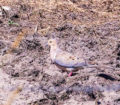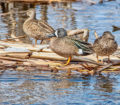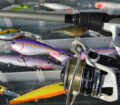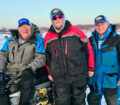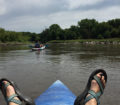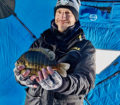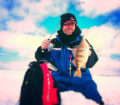By Bob Jensen
Fishing the Midwest Fishing Team
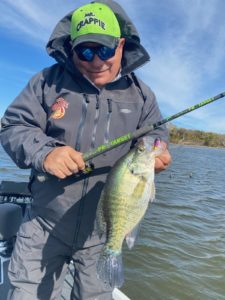
(photo by Bob Jensen) Mr. Crappie Wally Marshall catches crappies in the fall in a variety of areas. Docks are one of his favorite targets.
You can feel it in the air and you can see it in the sun. Nights are getting cooler, and the days are getting shorter. all is closing in on us. While some folks mourn the passing of summer, a good number of anglers are looking forward to autumn. And many of those anglers are looking forward to catching crappies.
Crappies are often thought of as a fish that is most easily caught in the spring, and while springtime is a very good time to catch crappies, so are the autumn months. Following are some ideas for getting in on crappie action the next time you go fishing.
In many lakes, crappies will be near docks. The best docks will be in deeper water. In a conversation with Mr. Crappie Wally Marshall, he said that docks are one of his favorite places to consistently catch crappies. The dock provides shade and cover that attracts baitfish, the baitfish attract crappies, and the crappies attract Wally.
He employs a technique called “shooting.” A sixteenth ounce jig and spinning tackle is best for shooting. Take the jig between your thumb and index finger, open the bail on the reel and pull the jig back to load the rod. Aim the jig where you want it to go and let go.
With some practice, you’ll be able to get that jig into the shaded area of the dock where the crappies live. Six pound test hi-vis line and a jig tipped with a Shadpole is a favorite set-up for Mr. Crappie.
Several years ago I was sharing a boat with crappie ace Scott Soderquist in north central Minnesota. We were fishing docks, but we had slip-bobbers on our line and sixteenth ounce jigs underneath. We were fishing the deep end of docks and the number of truly nice north-country crappies that lived at the very edge of these docks was hard to believe. North, south, east and west, crappies can be found underneath docks.
I have another fall crappie memory. My Dad and I were fishing for largemouth bass on a Midwest lake that was like many Midwest lakes. The lake was fifty feet deep at the deepest and a variety of gamefish, including crappies, called the lake home. It was a calm early evening in September.
We were casting the weedline in search of largemouth bass, and we were catching a few. Dad noticed something dimpling the surface maybe 50 feet out from the deep edge of the weedline. He had seen this before. I was in the bow running the electric motor, he was in the back. I wasn’t paying a lot of attention to what he was doing. He liked it that way.
Without my knowing it, Dad tied on a small jig with a plastic body and started casting to the dimples. He knew that the dimples were created by crappies slurping bugs off the surface. He caught several slabs before I caught on to what he was doing. I put the bass rod down, picked up a light spinning rod, tied on a small jig, and was soon catching slabs. This pattern is effective in many, many lakes across crappie country. Just watch for the dimples.
In some lakes, the basin of the lake will hold numbers of crappies. You’ll need to do some sonar work to find them. Cruise the deep basin areas with a close eye on your depth finder. Watch for fish close to the bottom. When you find’em, drop a jig on’em. An eighth ounce Mr. Crappie Scizzor Shad or Sausage Head have been good to me.
If you see a concentration of suspected crappies suspended, back off and cast to them. Crappies near the surface can be spooky fish. In deep water, catch a few for the table, then move on. Deep water fish of most species can be hard to successfully release.
In many areas of North America crappies are abundant, they’re fun, and they’re great on the table. Wherever you fish for crappies, one of the techniques just mentioned will help you catch a few or a bunch in the autumn.

